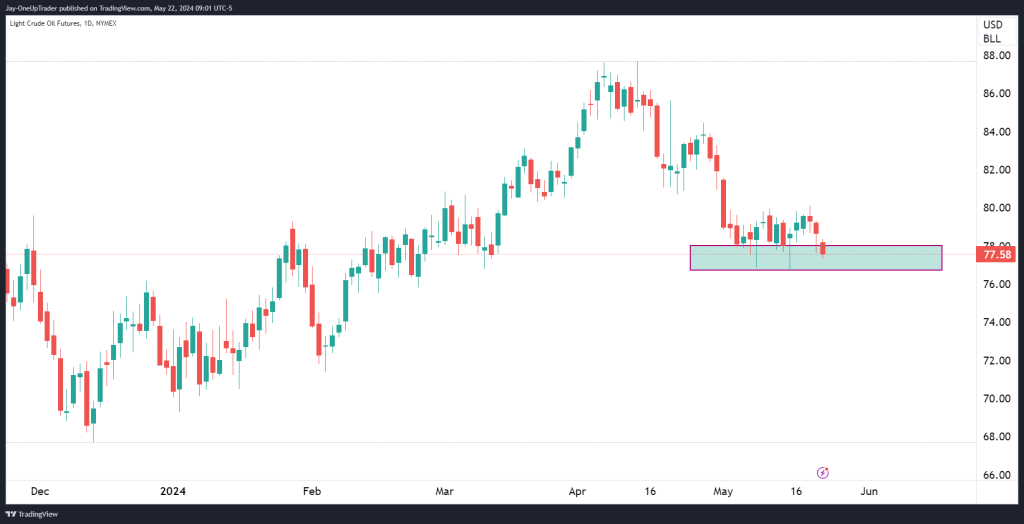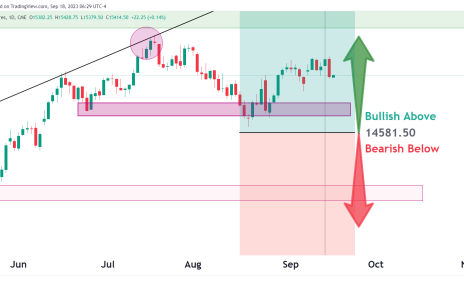According to the U.S. Energy Information Administration (EIA), crude oil prices are expected to average around $90 per barrel for the remainder of 2024, driven by OPEC+ production cuts and ongoing geopolitical risks. However, they anticipate a decline to an average of $85 per barrel in 2025 due to increasing global oil production (EIA Homepage) (EIA Homepage).
Goldman Sachs projects a trading range of $70 to $100 per barrel for 2024, and Barclays has lowered its forecast for Brent crude to $93 per barrel, citing demand concerns and economic weaknesses in key markets like China (CAPEX.com).
What do the Technicals say?

The small support zone in the chart above is what is holding the bulls up from dropping down, possibly to $70 per barrel.
The highlighted support zone is between $76 and $78. This range has provided support multiple times recently, as seen from the price actions bouncing off this level. Each time price dropped into this zone, bulls bid it back up but they have not been able to establish a move from it.
Trade Opportunity: Look for potential buying opportunities if the price tests this support zone and shows signs of reversal (e.g., bullish candlestick patterns, increased volume). Price is currently in this zone so a good strategy could be dropping to a lower time frame and looking for signal that way.
Resistance Levels:
- Near-term Resistance: Around $80. If the price recovers, this level might act as initial resistance as it is the high of the small consolidation phase seen on the chart.
- Medium-term Resistance: Around $82-$84. A significant previous support turned resistance level.
Trade Opportunity: Watch for potential selling opportunities or short positions if the price moves up to these levels and rejects with a target of the support zone.
Market Sentiment and News:
- Stay updated with global news that affects oil prices, such as OPEC+ production decisions, geopolitical tensions, and economic data releases.
- Monitor reports from authoritative sources like the EIA and IEA for forecasts and inventory reports.



